Poland’s depth and character unfold the longer you stay; each week grabbing hold of your heart just a little bit more. In Part 1 of our Road-Trip, there is no doubting that we uncovered some seriously unique and beautiful sights and we felt instantly connected. Although as the weeks have gone by, little bit by little bit, Poland has secured its place both in our hearts and on our Top 5 List of Most Memorable Places. I know it’s really easy to say, given the ‘recency factor’, although I just have the feeling that Poland will remain under our skin for a long while to come. Let’s see if we can transfer some of this magic through our words, pictures and videos. Don’t forget that our full documentary of our Poland trip is now available for FREE download – check it out here.
Here is our interactive map of our entire route through Poland.
Warsaw – city of scars and rebirth
After the disappointment of Łodz we were really hoping Warsaw would match our eager expectations. I do recognise that after so many cities in the last two and a half years, that there is some danger of being blasé, although we genuinely seek the unique characters of each place we visit and Warsaw was no different. Sometimes we do get travel fatigue and we have learnt now to stop, ground ourselves for a day or two before then exploring some more. And this was our calling as we approached Warsaw and we found the perfect place about 8 miles to the west of the city at Camping Kaputy.
Duly rested, I awoke with the same eager anticipation I feel after being stationary for awhile. A new city, new secrets to discover and new tales to share. With my camera fully charged we headed into The Smoke and found a fabulous secure parking area right underneath the Old Town, which for 6PLN per hour or 124PLN for 24hrs, was just perfect and so easy to access. (52.25011, 21.01568) Within five minutes we were in the hub of the Market Square, which like Wrocław has so much atmosphere and charm. With café bars hugging the outer edges and rainbow coloured facias looking down on the scene like parental giants, the Rynek was delightful and no crowds! My perfect scenario.
Armed with leaflets from the Tourist Info centre, we made a bee-line for all the iconic highlights on our Map, letting them guide us like Pied Piper mice. The Stare Miastro (Old Town in Polish) was the main course to our starter at the Rynek, and boy were we in for a feast – for the eyes and the soul. A Royal Castle that at 11.15am each day plays out a bugle call to the waiting crowds, Chopin playing benches, a panorama tower and monuments everywhere. It was one of those experiences where we felt like we needed to turn in circles to take it all in.
And if this was the main course, what about dessert? Well it would not disappoint as we headed down a road that looked akin to the Champs Élysées offering yet more magnificent architecture, palaces and grand hotels. We passed through the park with the Tomb of the Unknown Soldier and eventually to the very efficient Metro service that would take us straight to the Uprising Museum. It was here that our real education of Warsaw’s dark history during WW2 unfolded. We got a real sense of the tragedy and evil that smothered the city. Like Wrocław, the same destruction razed the city to the ground and their subsequent reconstruction is secondly only to the rebuilding of their spirits. The horrors of the Warsaw Ghetto and the memorials to those who perished stationed around this now thriving city just asserts how human endeavour can never been destroyed.
Warsaw is definitely worthy of a day trip, and longer if you can, as there is so much to take in – slowly. Enjoy it. We did. Check out our video below.
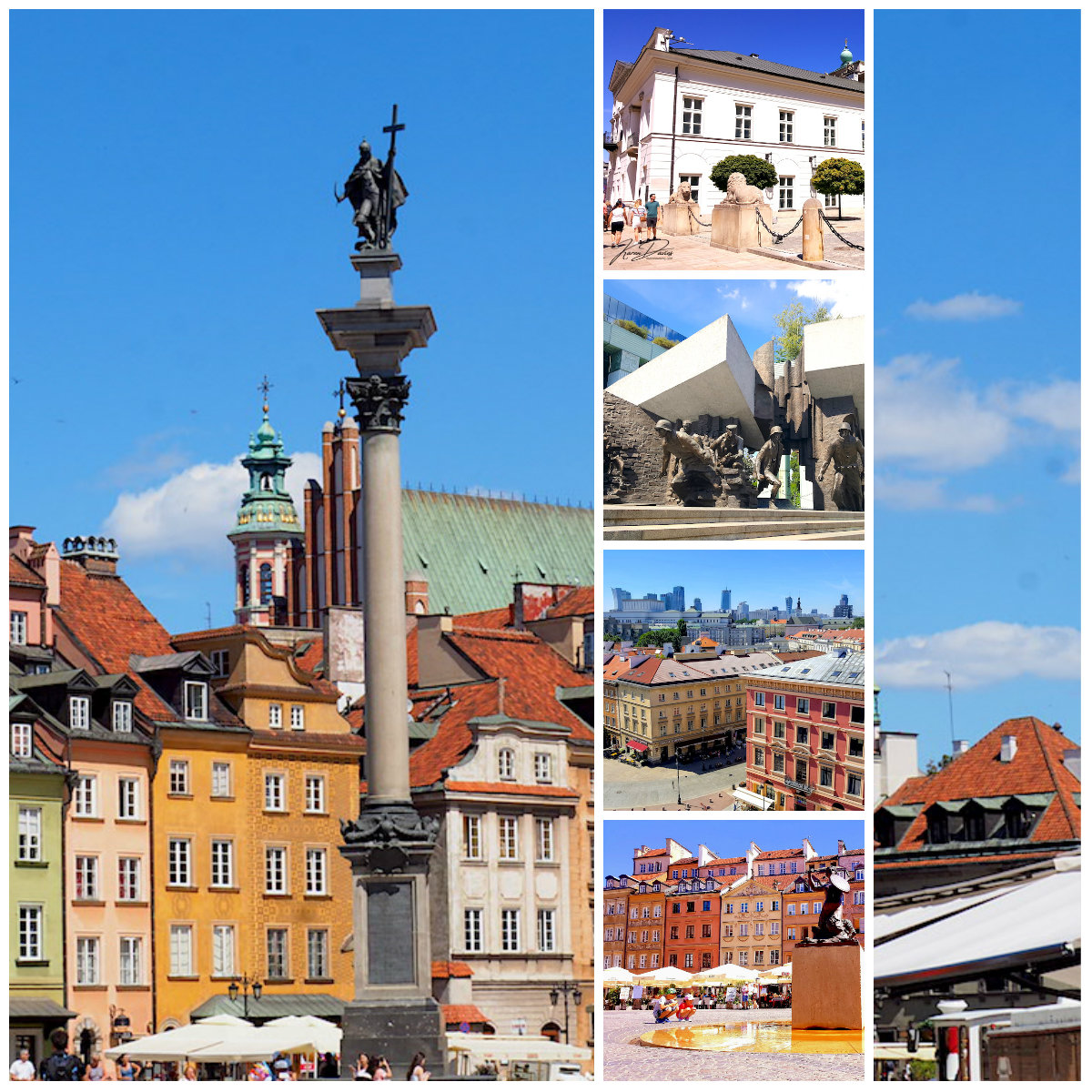
Treblinka – WW2 Extermination Camp
Poland’s history is one that sets your blood boiling at the sheer brutality of humankind against its fellow neighbours. Our school education really doesn’t prepare you for what Poland will teach you. They are tough lessons, although necessary ones, if we as a generation are going to protect the sanctity of all that is good in the world and ensure that human compassion is never again lost to power and corruption. Our visit to Treblinka was not the first memorial experience. Over the last couple of years we have been slowly educating ourselves to the horror of our forefathers and paying our respects at the memorials across Europe.
Treblinka was the most powerful experience, second only to Birkenau. We had the place to ourselves as we had stopped overnight in the car park and the silence was palpable. Although there are only camp remains here, the memorial stones are thought-provoking and the long walk along the Black Path was evocative. There is no bird song and nature has just decreed that no life shall blossom here except for hardy breeds. I shall always hold Treblinka in my heart and pay respects to those millions who were brought here to work and die. Read more about this moving experience on our blog.
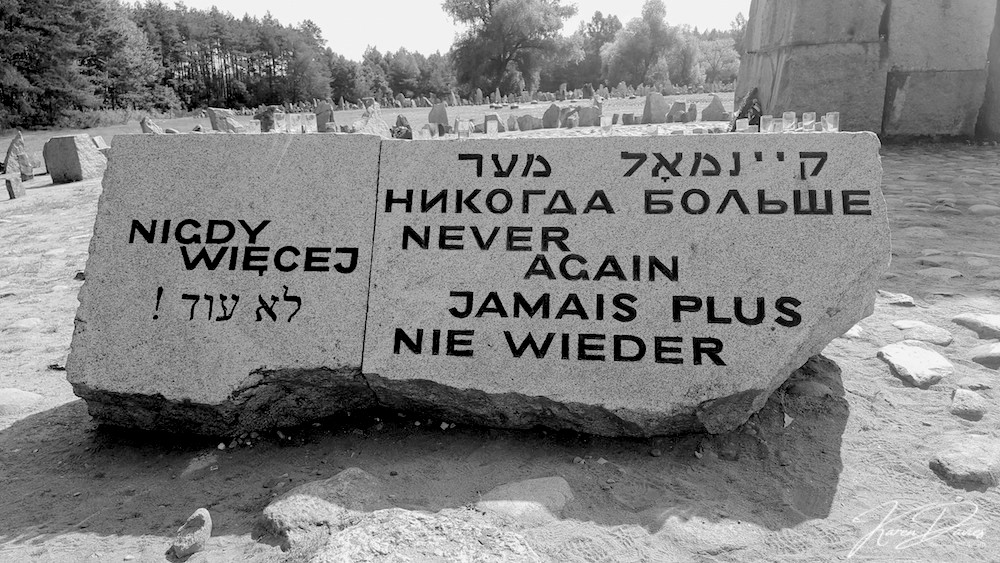
Lublin – Old Town loveliness
Like many of its Polish family, Lublin has an Old Town that has charm, tales to regale you and horror stories. Its castle in its past life became a prison during the WW2 for over 40,000 prisoners, most of whom were murdered. This theme continued post-war when the Soviets took over the royal walls, holding over 30,000 prisoners captive, many of whom were from the Freedom and Independence Association. The castle was a scene of death by torture, appalling conditions or execution. There is a lot of work being done in the town, so it didn’t appeal hugely, although inside the walls, it was delightful, colourful and definitely worth a short visit. There was a great parking area just underneath the Old Town walls and only 3PLN for an unlimited time. So you can park overnight here too – although probably a bit noisy. (51.24815, 22.57312).
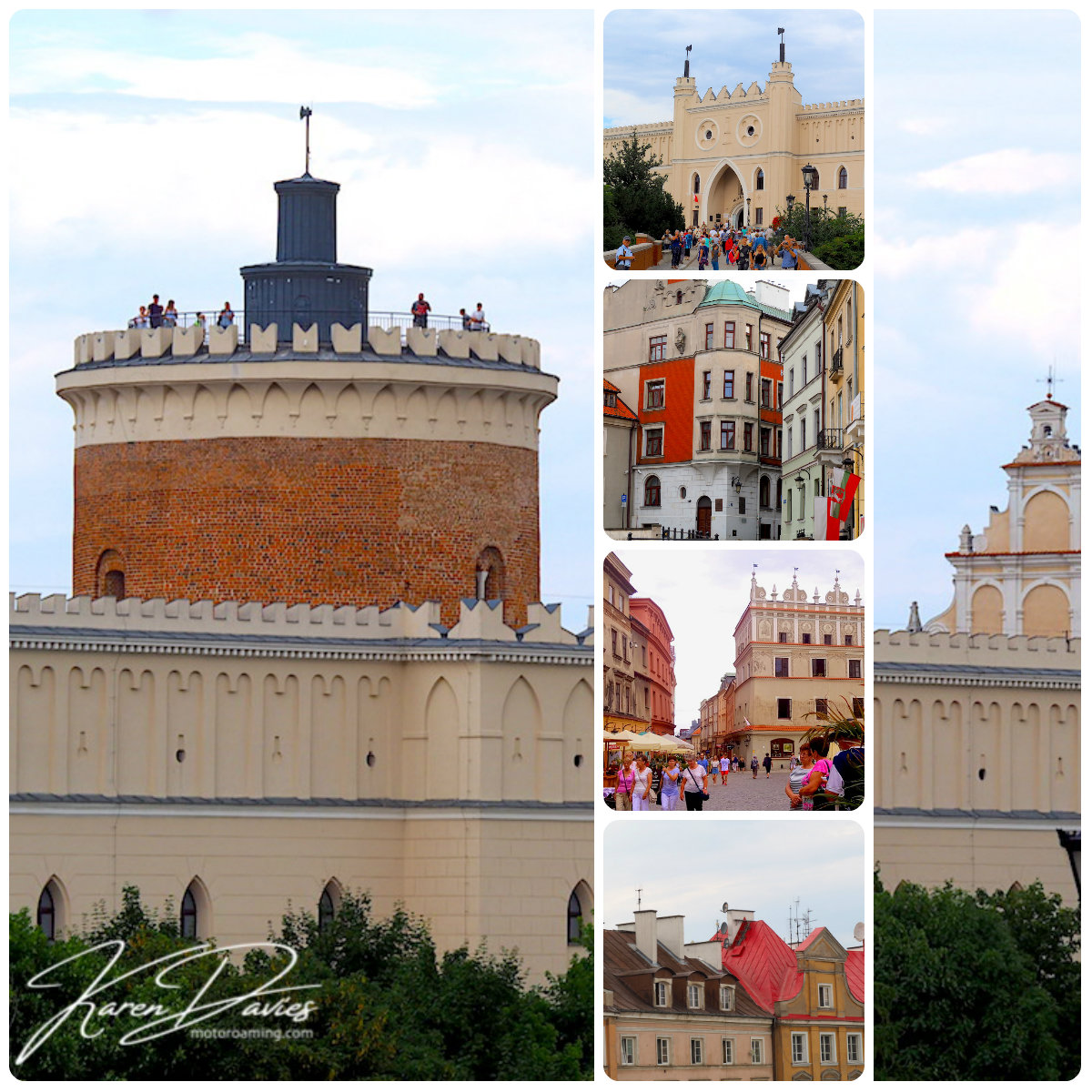
Kazimierz Dołny – gorges and Wailing Wall memorials
Kazimierz is a super little town on the River Wisła in Poland’s central region, just west of Lublin. A timeless collection of traditional Polish homes, interspersed with the inevitable tourist tat sheds that try to capture some income and who can blame them? There are castle ruins here, beautiful churches, a Tree Root Gorge, a Wailing Wall memorial to the Jewish population and three crosses honouring the victims of the plague outbreak in 18th Century. There is plenty to do here that’s for sure.
The Cemetery was created in 1851 on land donated by the town. Although when WW2 hit the country the Nazi’s tore down the headstones and used them for paving leading up to the Gestapo buildings. Then in the 1980’s it was decided to use the salvaged stones to commemorate the dead by building a Wailing Wall. The split symbolises the division of Male and Female graves. Some tombs that were in tact have been resurrected behind and in front of the wall. It is a very serene place to visit and to see Jewish ancestry being honoured in this way.
The Tree Root Gorge is a delightful 15 minute walk through a cutting in the forest, where nature (and perhaps a little bit of human intervention, says the cynic in me) has carved a shallow gorge revealing tree roots that are precariously hanging onto the earth. There’s parking along the road to the Gorge, which cost between 5-25PLN depending on the size of your vehicle. It’s certainly a unique site, if not a little small.
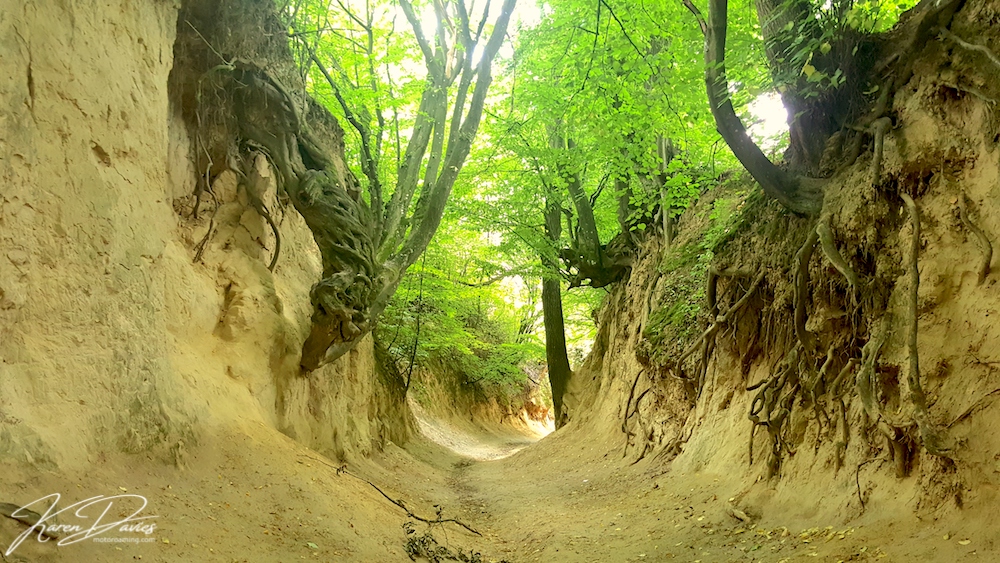
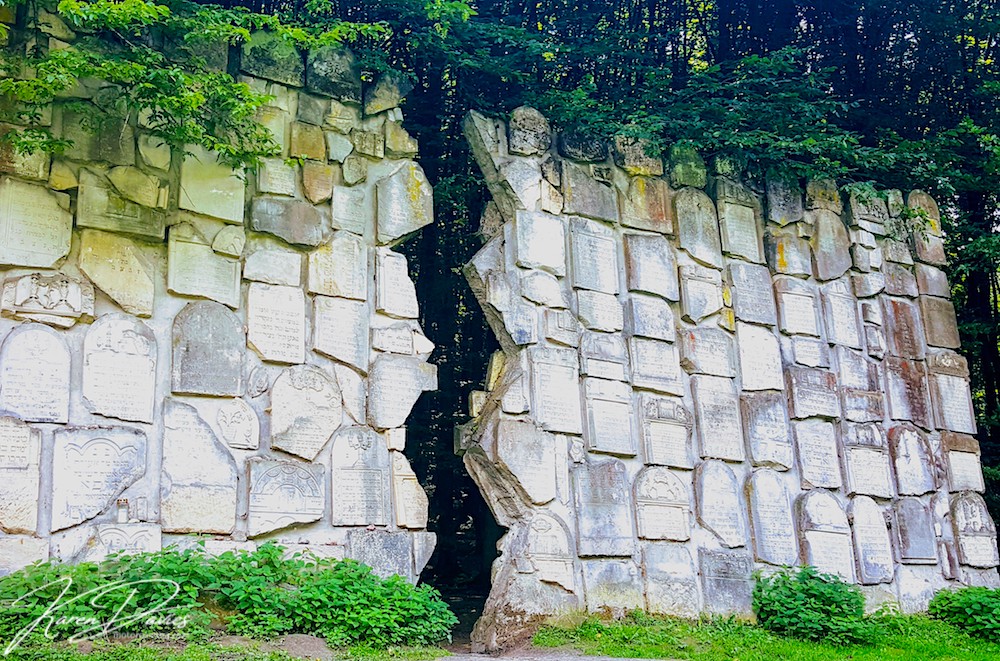
Sandomierz – Royal City
Sandomierz is one of Poland’s most important and oldest cities. Whilst there is some evidence of dwellers here back in 5000BC, the main settlement is thought to date back to the Middle Ages. And tucked away in the middle of nowhere it is hard to understand its significance. Yet it stands proud on an escarpment with views across the entire valley. Together with Wrocław and Kraków, Sandomierz Castle was given royal status and being at the geographical points of three regions and on important trade routes, Sandomierz’s history was sealed. Although it’s been a tough old battle for them and not for the reasons that you might presume. This time it is not just WW2 we can caste a judgemental eye towards. This city came under the siege of the Lithuanians in 14th century, the Swedes had a go in 16th Century, a plague devastated the population in 1800 and World War 1 became their nemesis. So how is this town is still standing after all this? Goodness only knows, although the buildings still hold their dominance and with one of the best preserved town gates in Poland, Sandomierz deserves a visit.
We stayed at Camping Browarny, (50.68009, 21.7548) which is perfectly placed at the foot of the town’s escarpment and only five minutes from the town walls. And all for the price of £16 per night for a motorhome, two peeps and electricity – what a bargain.
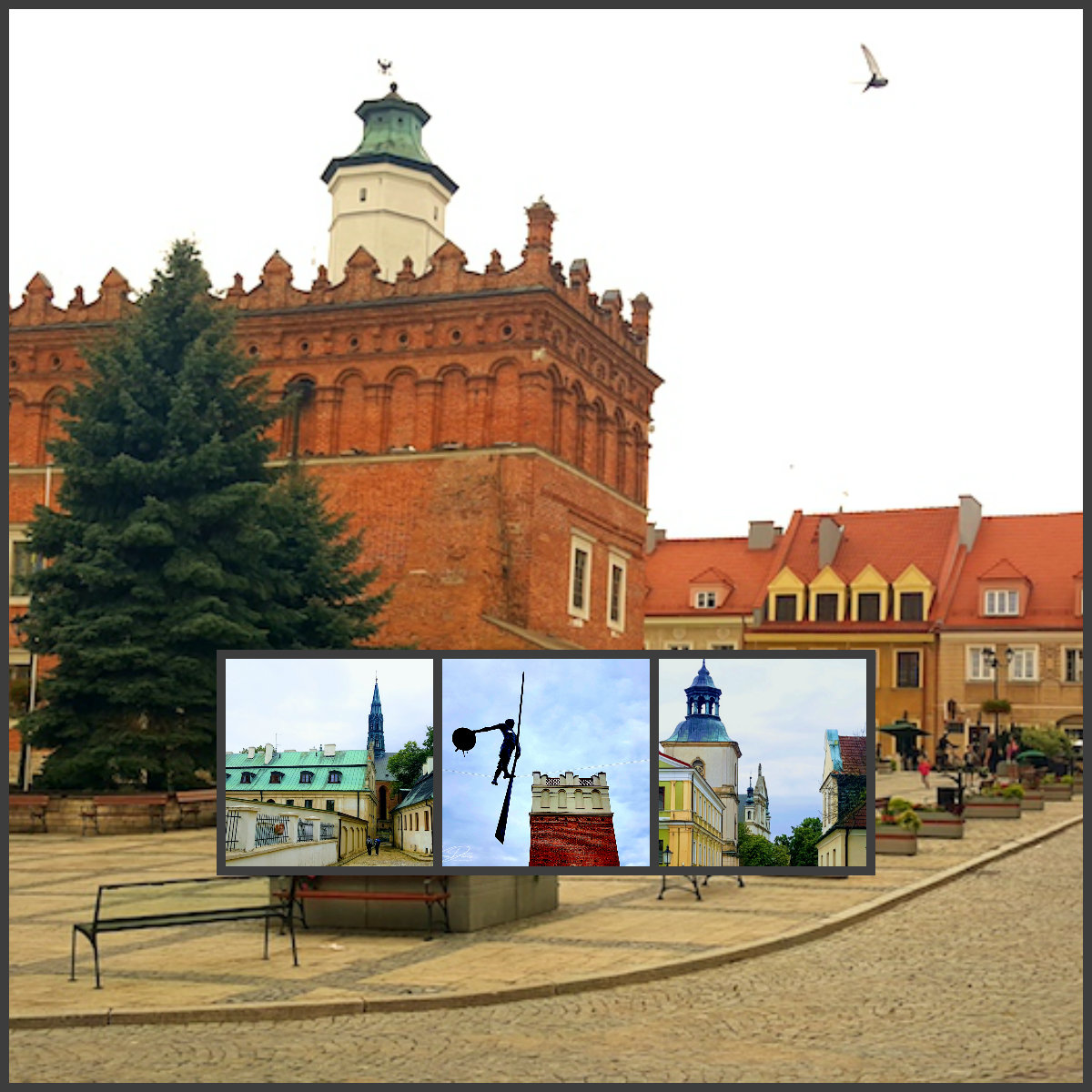
Zalipie – The Painted Cottages
In 19th Century, traditional Polish cottages had cooking stoves that would puff out smoke, flooding the house with soot. So the ladies of the house would mask their rooms with ornamental paintings using lime whitewash, black soot and beige clay. This practice then evolved in the 20th Century into something more colourful, a tradition that is still honoured to this day, giving it a real folklore feel to it. Wandering around this real open air museum, is just captivating. The newer houses haven’t followed the tradition, although there are enough of the original cottages that still have the paintings around their doors, windows, fences, bridges, wells, kennels and farm buildings. It is simply charming and there are just so few tourists here. So if you want something unique that offers you a real taste of rural Poland, come here. Just fifty miles north-east from Kraków, definitely worth a little diversion. We stopped overnight behind the museum, in front of the pre-school, with the proprietor’s permission. (50.23595, 20.8623)

Kraków and its vicinity
Kraków, Poland’s ancient capital, stands proudly amongst it city competitors, receiving probably more visitors per year than its rivals. It is a Mecca for tourists who flock from all over the world to sample its elegant Rynek – Market Square, drink beer in its Barbican Street or visit the many museums that tell tales of its wartime role and hold the secret behind why Kraków was not decimated like its neighbouring cities of Wrocław, Warsaw and Łodz.
A visit to Poland’s famous daughter is however not just a city tour – there is so much more to see in and around the area. We have a dedicated 10 Day Itinerary to share with all the detail, although here’s the highlights….
- Oświęcim – Auschwitz-Birkenau Camps, within 1 hour of Kraków that can be done in a day. Do Birkenau for a raw and reflective exposure to the Death Camp with few crowds and no queues. Go to Auschwitz for an excellent museum and storytelling portrayal of life and death in the infamous camp. Expect queues and crowds though unless you go very early or very late.
- Wieliczka – Kraków’s famous Salt-mines just 30 minutes south of the city so very easy to get to. Again our suggestion is go early or late as the queues can be pretty bad. It has an excellent 2.5hr tour that takes you into an underground world that Disney himself could never have conjured up.
- Zalipie – As I’ve already mentioned is really worth a visit for the day. It may be a 90 minute drive although definitely worth the excursion to see a real taste of a traditional Polish village and living and breathing folklore.
- Eagle’s Nest Route – following the 794 north from Kraków you will be able to follow the route of the Eagle’s Nest, a series of 44 castles and watchtowers all with different characters and stories to tell, that sit proudly in the land of the Polish Juras. It is a beautiful region and a lovely road to follow north towards Częstochowa.
- Poland’s Sahara Desert – Błędowka Sands is perhaps not quite what you imagine when you think of the Sahara, although it is certainly a unique landscape and for that reason alone it needs to be seen and appreciated. It is a man-made area that dates back hundreds of years when it was deforested and the water table dropped so low that it could no longer sustain life. Go see it, just to say you’ve been!
So a visit to Kraków is so much more than a city-break. Come and explore the area for its rich diversity, haunting history and unique earth-scapes.
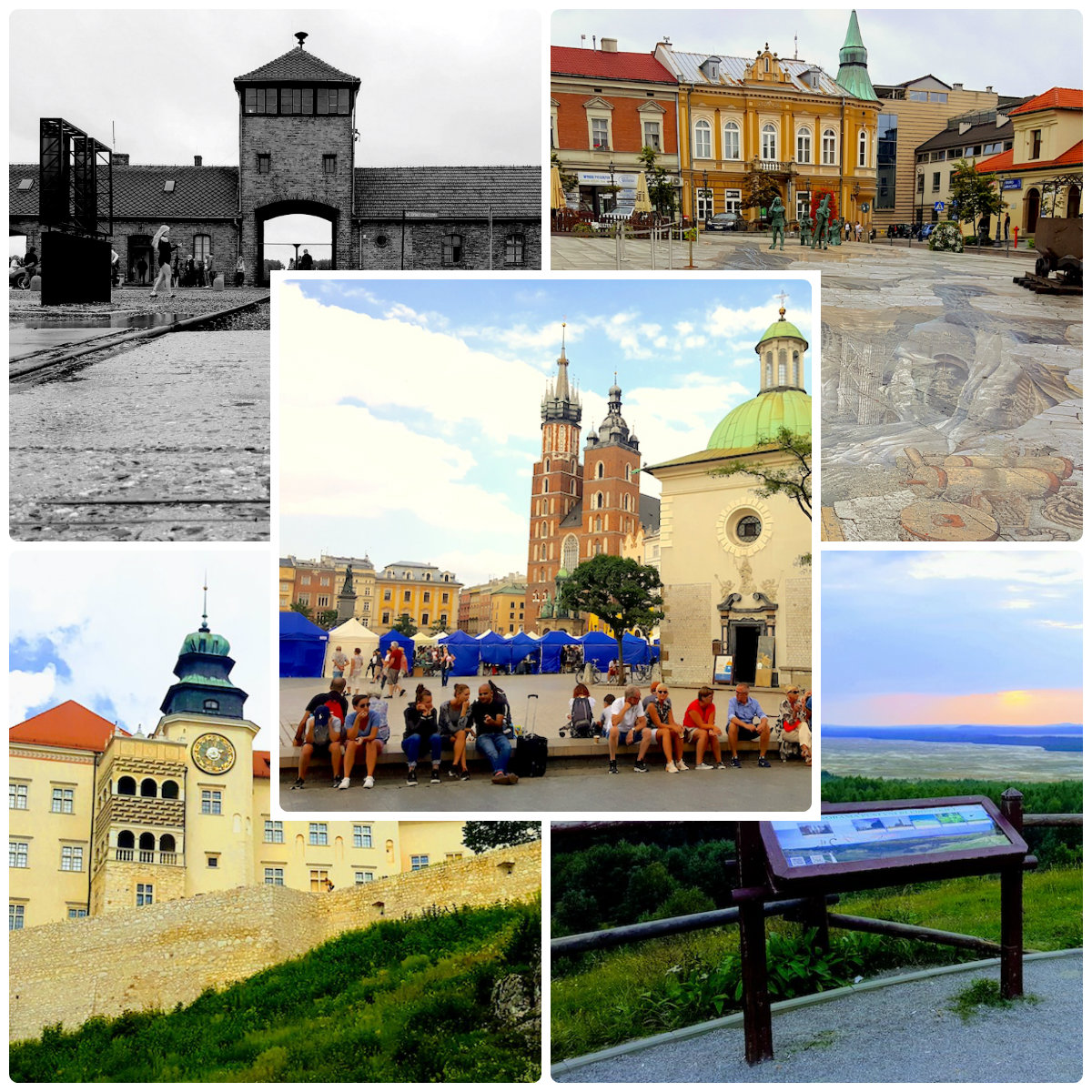
Wooden Church Route of Małopolska
So many tourist brochures applaud the merits of Kraków and Zakopane in this rich southern region of Poland, although in so doing miss a pretty treat. This Małopolksa county has abundant pickings no more so than the Route of the Wooden Churches. A collection of 74 wooden beauties that were built between 15th-18th Century. Made, inside and out in wood, they stand as a testimony to the art of medieval craftmanship whilst they also display defiance against nature’s wrath. Eight of these churches have been brought under the UNESCO banner, showing off the best of these magnificent buildings. Almost every village you drive through in this region will have its own wooden beauty, even tiny hamlets. In addition, you have the advantage of being in the foothills of the Tatra mountains and so the whole landscape begins to alter. More undulating scenery opens up, reservoirs and rivers course their way from the mountains towards the coast. It’s a lovely environment that needs to be on your radar for a bit of real Poland.

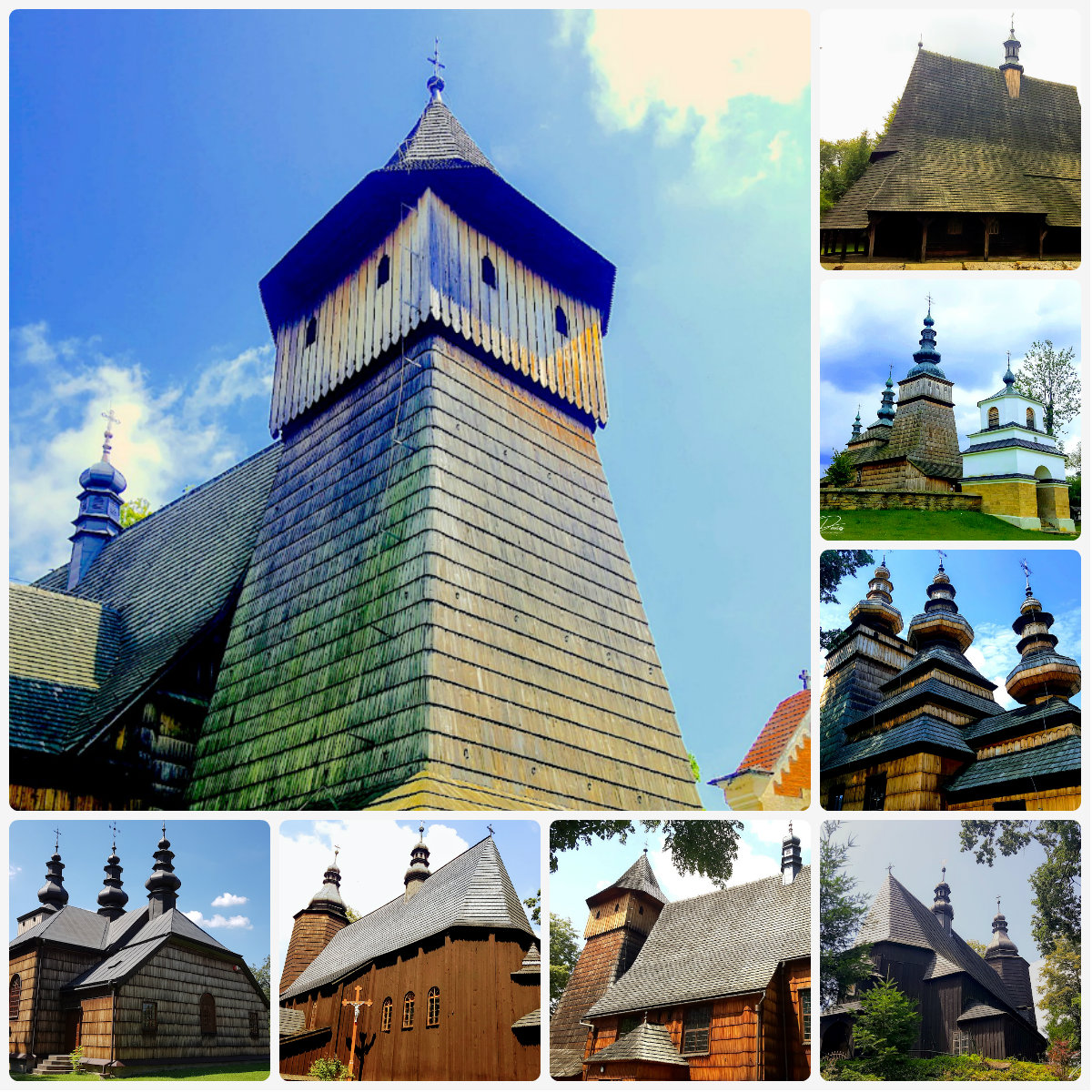
Poland’s Alps – Tatra Mountains
Home to bears, wolves and lynx to name a few, the Tatra’s are Poland’s highest mountains and they provide a deep connection with Slovakia just across the border. Towering peaks with aggressive looking jagged edges, the Tatras form part of the Carpathian Mountains, a range that arcs from Romania around to Czech Republic. With peaks in the Tatras reaching 2,400m, these are giants with stature, beauty and challenge.
Skiing, hiking and cycling are big in this region and in fact the Polish equivalent of Tour de France passes through the region in August every year. Tour de Pologne has been sporadic since 1928 although from 1952 it has become an annual event which now appears on the UCI Pro-Tour.
Two notable places that appear on The Motoroamer’s POI map for this area are; Dunajec in the Pieniny National Park. Leaving behind the wooden church icons, you enter a curvaceous world that would look at home in the bosom of Switzerland. This is rural Poland at its best with farmsteads being the only dwellings we often saw for miles, perhaps just the odd hamlet dotted here and there – oh and the obligatory elegant church. Aside of this, we were offered a range of treats for our eyes and the outdoor pursuits devil within us. Reservoirs, 14th century castles and dramatic limestone gorges that have been carved by the river Dunajec creating mild white waters for theeager kayaker or may be a more gentle coursing on a 19th century raft that offers to carry you down river for 10 miles through this incredible gorge. Or why not cycle it instead and see life in a completely way?
The second port of call would need to be Zakopane – a Alpine-esque town in the most southern part of Poland bordering Slovakia. It is known as the Winter Capital of Poland although I think August might have something to say about this. Given the number of people who flock to this winter wonderland resort in the summer, I am sure that Zakopane revels in its all-year-round appeal. I am in no doubt that beneath the blanket of crowds and the gauntlet of tourist tat huts that line every mountain attraction, this is a delightful place. After all who could not love the mountain backdrop, wooden Alpine houses and outdoor lifestyle? Zakopane is the official gateway to the Tatra National Park, offering hiking valleys, cable-cars and secret lakes hidden amongst the mountain peaks. Although if you come here, plan your trip carefully so you can breathe in the lovely mountain air and not be affected by the inevitable congestion that the holiday season brings.
Sadly at the end of our Poland Road Trip, Zakopane didn’t leave us on a high. We recognise that not all travel can be iconically beautiful and memorable and that actually all faces of travel need to be experienced; and we have left Poland feeling that Zakopane is not indicative of Polish culture. We would come back to explore whether we can see beyond the crowds; may be in May/June or September.

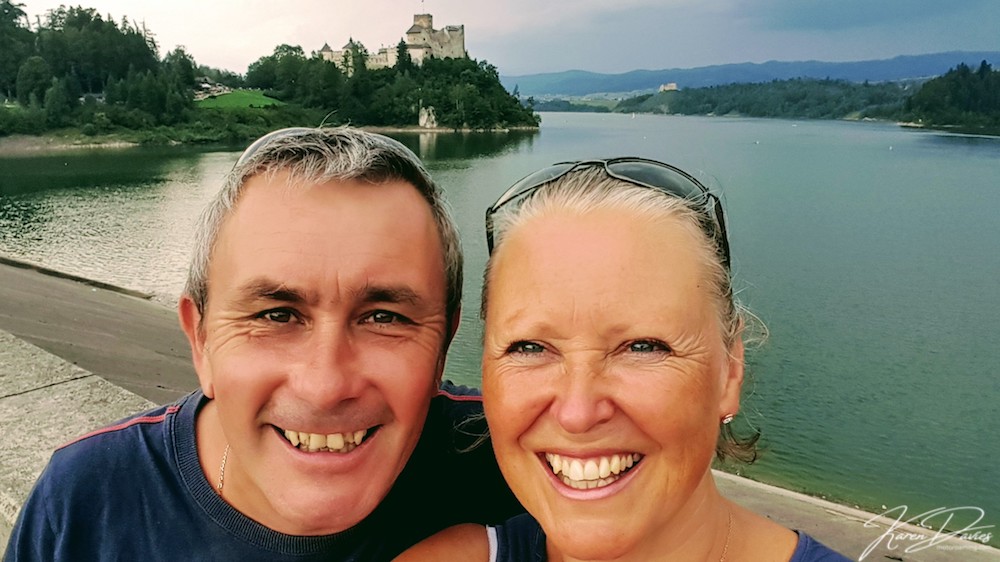
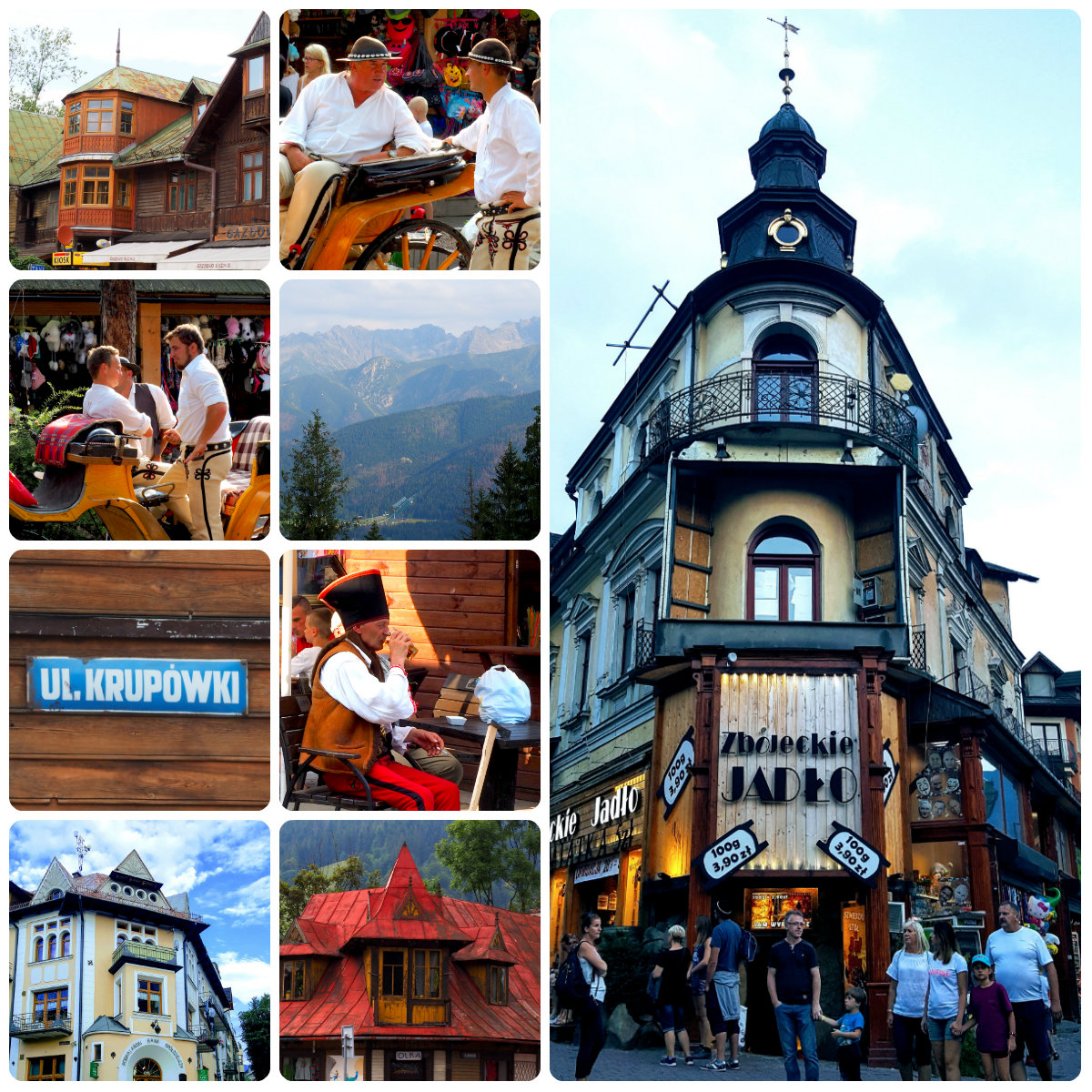
Poland Reflections
So as we sit here waiting for one of the infamous mountain summer storms to pass so we can head south, we reflect back on our road-trip through Poland. From 16 June when we first set foot on this fair land with a sense of uncertainty and curiosity, around each corner we have been more and more captivated by this Central European gem. Conspicuous by its absence on the European stage, Poland’s progressive economy is clear to see everywhere. From the bulk order of pavement bricks that they have surely got a mountain of hidden somewhere in the hinterland, to the rural country that relies on its simplicity and earthly values to secure a happy life. From rebuilt cities that defy enemies’ domination, to memorials that ask – no beg for us to learn from the past and never again repeat the atrocities of war. From lakes, gorges, rivers, street art, geological mysteries, underground worlds, castles and rolling countryside – we have been taken on a rollercoaster ride of experiences that have left our emotions wrung out like lettuce leaves. Although Poland has given us one of the most rich, meaningful and memorable trips that will serve us with reminders of its contrasts for years to come.
We had so few expectations because, quite honestly Poland had never been on our radar and in fact was only ever intended as a ‘pass through’ country en route to Lithuania. Although what a surprise and a delight Poland has been and I will always look so fondly on our experiences here. What would we say to entice others to Poland?
Come to an unassuming land, that has scars deeper than the ocean and a spirit taller than any mountain, with a character that reaches right into your heart. A rainbow of colours seeps from every aspect of life, asserting their place in a modern world, which is so removed from the grey communism that sought to repress them. Poland calls to be put on the map, demands to be respected and asks for us to share in its glorious and complex culture.
Tempted by Poland? Download our FREE eBook now!
71 pages of information, route guides, practical tips and camping options all in one place. It’s yours with our love. Click the image to access your copy.
For other tales from our Poland Road-trip that you might enjoy click here.

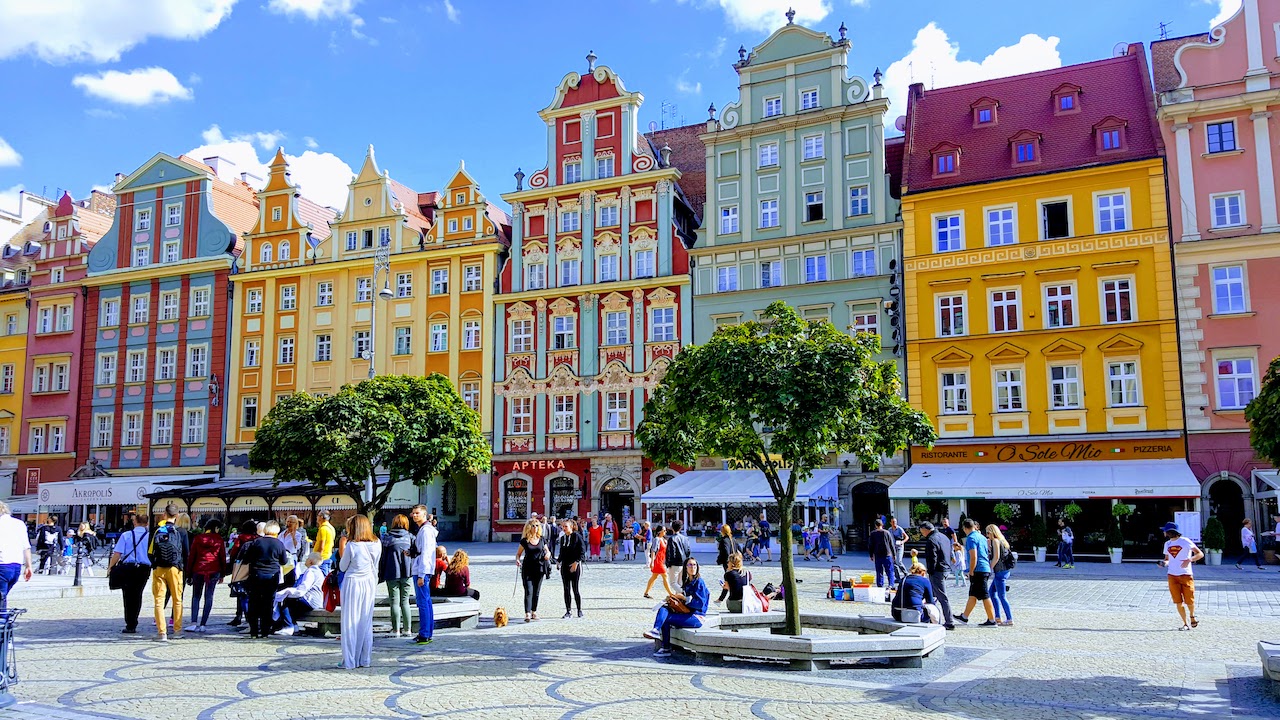
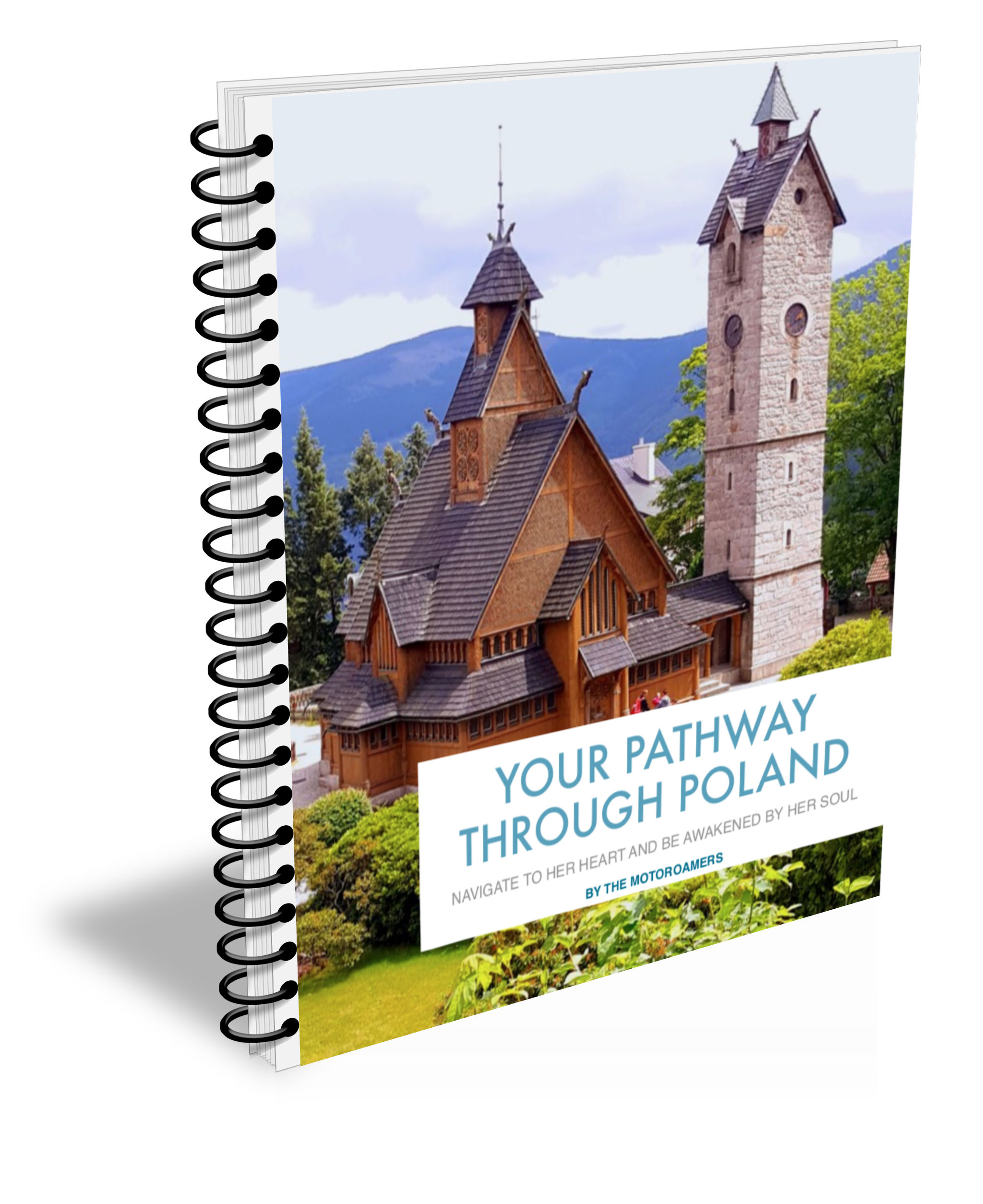
Poland is definitely a country I plan to visit soon, but reading about your road trip makes me want to follow a similar route! Thanks for sharing!
Hi Zoe, you’ll not be disappointed by Poland. We’ll be back for sure. Kx
I was just visiting Poland a few weeks ago and this is a great itinerary that adds some wonderful off the beaten path ideas into your itinerary! Thanks so much for sharing, next time I’m there I will for sure be taking a day trip to Zalipie’s painted cottages 🙂
Hi Abbie – ah Zalipie – such a gorgeous place to visit. Kx
I think you have done an amazing job of describing your visit to Poland. The videos were good, the pictures great and your heart in every sentence.
Hi Tracy thanks so much for your lovely comments. We appreciate it. We truly loved Poland and glad it has come across authentically. Kx
What a beautiful trip through Poland. so much charm and history and good! i would love to do some slow travel through this beautiful country and concentration camps are always so powerful and haunting.
We agree Kelly. It’s a must country to visit
Very helpful and informative post. Only been to Krakow. Must more to see here. The painted cottages look interesting. I’d very much like to see the Warsaw ghetto uprising, Treblinka
Great read.
I spent 10 days in Poland 2 yeas ago and also really enjoyed it but you got to see a lot more.
Makes me want to go back !
Well done Sandy. Not many Brits go to Poland so you’ve done more than most.
Just spent the day with a youngster who was in Poland for a week and she is raving about it so it’s now firmly on my list for early next years and your post was perfect timing so I have saved it for my trip.